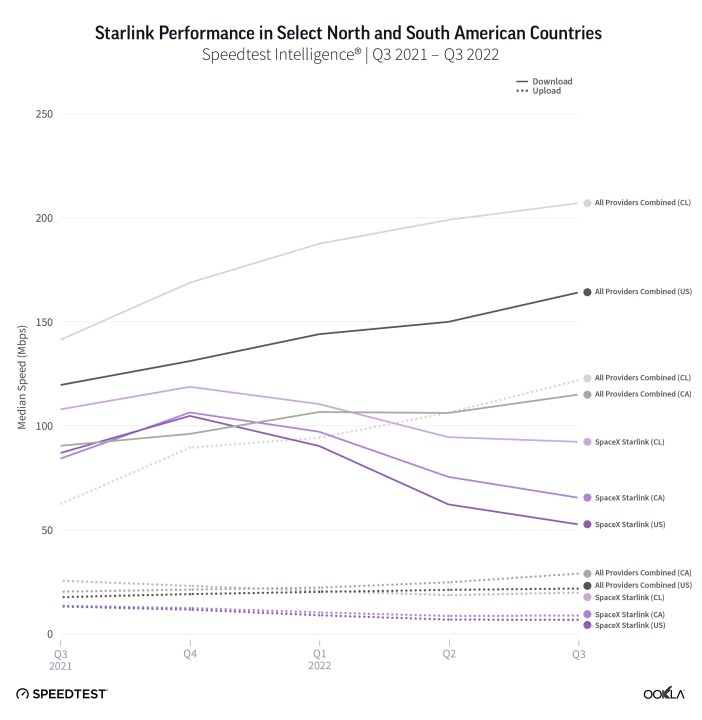Ookla just revealed in a report that SpaceX’s Starlink internet download speeds have reduced yet again this quarter — by double digits, in fact — as the space-bound network has seen an explosion of new users.
SpaceX’s Starlink satellite internet service continues to attract subscribers who can afford it, especially for customers where connectivity and land-based infrastructure is limited or even non-existent.

Throughout the year, active subscribers in the U.S. increased by about 200%, from having at least 10 unique users in 776 U.S. counties (roughly 25% of all counties in Q2-Q3 2021) to 2,399 counties (roughly 75% of counties in Q2-Q3 2022).
However, with the added traffic and burden on Starlink’s constellation, download speeds within the same time period have taken a hit. Users in the United States have experienced as high as a 17% speed reduction, while Canadian consumers are seeing at least a 14% hit. Upload speeds have seemingly not been affected.

That being said, even with the drop in speed, customers in the U.S. and Canada are still averaging more than 50Mbps down, which means it’s more than sufficient for media consumption like 4K streaming or video conferencing.
Multiplayer online gamers, however, could potentially face increased lag. An interesting anecdote is that among countries in North America, Puerto Rico and the U.S. Virgin Islands had the fastest Starlink, while in South America those were Brazil and Chile.
This increased congestion of Elon Musk’s internet service also comes in-line with the recent removal of its unlimited data policy, forcing users who use more than 1TB per month during peak hours to get deprioritized. An extra-cost tiered system was introduced instead to help spread out the bandwidth.
Editors' Recommendations
- SpaceX restricts Ukraine from ‘weaponizing’ its Starlink internet
- New SpaceX Starlink Maritime service brings internet to boats
- SpaceX announces Starlink for RVs, with no wait for dishes
- Starlink is increasing the cost of its internet service
- Elon Musk’s Starlink helping to restore Tonga’s internet




